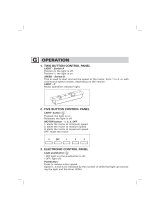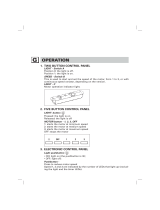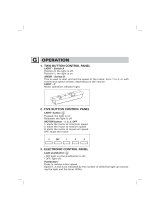
19
INSTALLATION
C
(Section reserved for qualified installers of the range hood)
Minimum distance: distance between the pan supports of the cooker and the
bottom-most section of the hood. When the hood is positioned above a gas
equipment this minimum distance must be at least 65 cm (see picture C1/C2)
or even more, if this is specified in the instructions for use of the gas cooker.
In the outside exhaust version, the diameter of the fume discharge duct must
be no smaller than the range hood connection.
In the horizontal sections, the duct must slope slightly (around 10%) upwards,
so as to better convey the air outside of the room.
Avoid using angled pipes, make sure that the pipes are at least of the mini-
mum length.
Comply with the current regulations on air discharge into the atmosphere.
If a boiler, stove, fireplace, etc. that uses gas or other fuels is being used at
the same time, make sure the room where the fumes are extracted is well
ventilated, in compliance with the current regulations.
Mounting instruction: see section “O” of the booklet.
ELECTRICAL CONNECTIONS
D
(Section reserved for qualified installers)
WARNING!
Before doing any work inside the range hood, disconnect the appliance from
the mains power supply.
Check that the wires inside the range hood are not disconnected or cut; if this
is the case, contact your nearest service centre. The electrical connections
must be performed by qualified personnel.
The connections must be performed in compliance with the legal standards in
force. Check that the relief valve and the electrical system are able to support
the load of the appliance (see the technical specifications in point B).
Some types of appliance are supplied with a cable without plug; in this case,
“standardised” plugs must be used, keeping in mind that:
- the yellow-green wire must be used for the earth,
- the blue wire must be used for the neutral,
- the brown wire must be used for the phase; the cable must not come into
contact with hot parts (over 70°C).
- fit a plug that is suitable for the load to the power cable, and connect it to a
suitable power outlet.
For appliances that come supplied with cable and plug please ensure they are
plugged into a circuit suitable for this appliance.
Please refer to a qualifed person. (See technical specifications in point B).
The manufacturer declines all liability if the safety standards are not ob-
served.


















